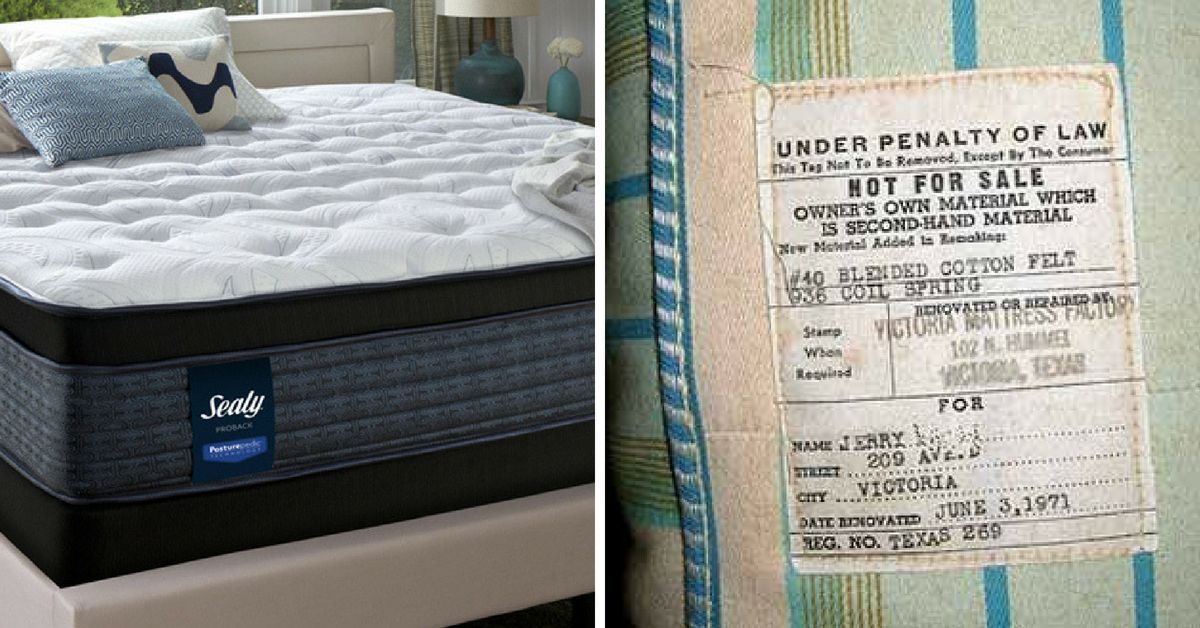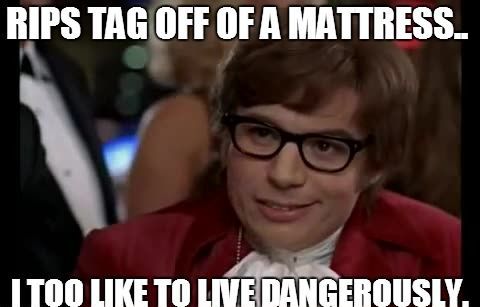We've all seen the tags that hang off of our mattresses, and we've heard the jokes about them. They all say the same thing "Under penalty of law this tag is not to be removed."
But how can this be true? It can't possibly be illegal to remove a tag from something you own, right?
It's one of those weird things that makes a lot of people second-guess themselves so much that they just end up leaving it there because it's not ever seen anyways, so why bother risking it.
Well, for those of you rebels out there who defiantly tore the tag from their mattresses and pillows, I've got news for you: It's not actually illegal.
I know, it's disappointing, right? But imagine how hilarious it would be to have the 'Mattress Cops' burst into your home to check your tags, only to find you've been careless and allowed the dog to rip it off.
So, if it's not illegal, why does it say so on the tag?
There's an important distinction in the wording that reveals the true reason behind it. It usually has some stipulation in it that clarifies that the tag is not to be removed "except by the consumer," but the story behind why it was created is kind of crazy.
The reason that the tag is there in the first place is actually to protect you, the consumer, from buying a mattress that was already used or filled with something you really didn't want it to be.
The label first started appearing in the early 20th century to guarantee that customers were buying quality products.
Apparently some companies were cutting costs by using horse hair, newspaper, rags, or even corn husks to stuff mattresses, because the client couldn't see inside of their bed anyways.
However, it led to a lot of bugs and bacteria and was not really safe. In response to this, the government required that all mattress manufacturers use these tags on their products, listing the contents inside.
Some companies would get around this by attaching the tag, but then removing it before it was sold. Whether it was the salesmen ripping off the labels of slow-selling models, or manufacturers tearing them off before shipping them out, these required tags were not always seen by the customer.
To combat this, the government added to their law, saying that not only do they need to have a tag affixed to the mattress, but removing it would be a crime. The regulation states:
"[It is unlawful to] remove or mutilate, or cause or participate in the removal or mutilation of, prior to the time any textile fiber product is sold and delivered to the ultimate consumer, any stamp, tag, label, or other identification required. Any person violating this section shall be guilty of an unfair method of competition, and an unfair or deceptive act or practice, under the Federal Trade Commission Act."
The tags would confused the customers a bit, because when they first appeared, they didn't have the line "except by the consumer," so they thought the tag needed to stay on.
At least now it's become a little bit more clear, but still crazy to think that some companies actually used horse hair in their mattresses!
Did you leave your mattress and pillow tags on, or did you rip them off a long time ago?
More from Shared:
7 Things People Are Saying With Their Body Language And How To Spot Them
10 Common Signs That You're Eating Too Much Salt
The Dangerous Mistake That Could Make You Sick Every Time You Eat Ice Cream
Mom's Clever Earwig Hack Goes Viral - And It Actually Works
Souce - Mental Floss / Live Science / Today I Found Out





